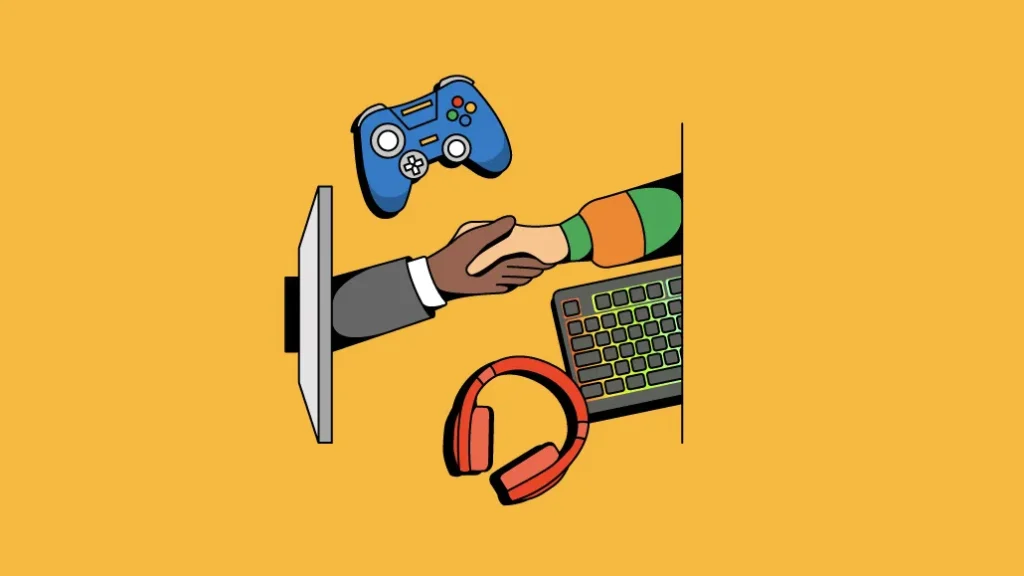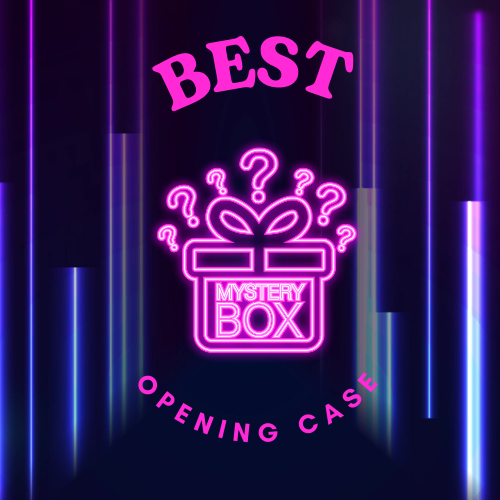
From loot boxes to mystery boxes, the connection between gaming and e-commerce has become increasingly evident over the past decade. What started as a niche element in video games has now transformed into a global trend influencing online retail. The evolution from loot boxes in digital spaces to physical mystery boxes in e-commerce represents a fascinating journey shaped by psychology, user behavior, and innovative marketing strategies. Understanding this transition provides insight into the broader changes in consumer expectations and engagement in the digital era.
The origins of loot boxes in gaming culture
Loot boxes made their debut in the gaming world as virtual treasure chests containing randomized in-game rewards. They were initially introduced to enhance player engagement and offer an element of surprise. Titles like « Team Fortress 2, » « Overwatch, » and « FIFA » became synonymous with loot boxes, using them as a monetization tool that offered both cosmetic and gameplay-enhancing items. Players would purchase or earn loot boxes, then open them to reveal random items, creating a cycle of anticipation and gratification. This model proved incredibly lucrative, drawing on psychological triggers related to gambling, chance, and reward.
The psychological appeal of randomness and reward
What made loot boxes so compelling was their use of variable reward schedules, a technique borrowed from gambling psychology. Instead of receiving predictable rewards, players were enticed by the possibility of getting rare or valuable items, even if the odds were low. This unpredictability kept users engaged, and often led to repeated spending. The dopamine rush experienced when opening a loot box became a key component of its allure. This same mechanism would later be replicated in e-commerce, particularly in mystery box platforms.
The backlash and regulation of loot boxes
Despite their popularity, loot boxes also drew significant criticism. Concerns about their similarity to gambling, particularly among younger players, led to increased scrutiny from governments and regulatory bodies. Countries like Belgium and the Netherlands implemented strict regulations, forcing game developers to alter or remove loot boxes from their products. These changes created a space for innovation outside the gaming sphere, as companies looked for ways to retain the engagement benefits of loot boxes while avoiding legal challenges.
The transition from digital to physical: emergence of mystery boxes
As the gaming industry grappled with regulation, entrepreneurs and marketers saw an opportunity to take the concept of randomized rewards into the physical realm. Mystery boxes, essentially loot boxes in real life, began to appear in various sectors, from fashion and electronics to toys and collectibles. These boxes offered consumers a tangible product with the same psychological thrill as their digital counterparts. E-commerce platforms built around mystery boxes quickly gained popularity, leveraging the same suspense, scarcity, and excitement that had made loot boxes successful.
Gamification elements in e-commerce platforms
To maintain the immersive experience associated with gaming, mystery box websites began to incorporate gamification techniques. Users could spin wheels, complete challenges, or level up accounts to earn better rewards or discounts. The user interface often mimicked video game aesthetics, with sound effects, animations, and themed boxes. These features were not just for entertainment; they played a critical role in increasing session time, encouraging repeat visits, and enhancing overall customer satisfaction.
Creating a sense of community and competition
Another aspect borrowed from gaming was the sense of community. Mystery box platforms introduced leaderboards, forums, and social media sharing options. Users could post their unboxing videos, show off rare wins, and compare their luck with others. This competitive yet communal atmosphere heightened the excitement and contributed to viral marketing. Just like in gaming, being part of a community that shared victories and rare finds created emotional investment and brand loyalty.
Influencer culture and livestream unboxings
Gaming also paved the way for influencer culture, where content creators build audiences around gameplay and commentary. This trend naturally extended to mystery box platforms, with influencers livestreaming their unboxings or posting curated content on platforms like YouTube and TikTok. These videos became powerful marketing tools, showcasing the thrill of surprise and the potential value of the items inside. The authenticity and entertainment value of these unboxings attracted new users and helped legitimize the mystery box format as a mainstream e-commerce trend.
The evolution of user expectations
As users became more accustomed to gaming-like experiences in online shopping, their expectations evolved. They no longer just wanted products; they wanted experiences. Mystery box platforms responded by offering tiered rewards, bonus rounds, and personalized boxes based on user behavior. This experiential shift mirrored developments in the gaming world, where content personalization and user engagement had become key priorities.
Monetization strategies inspired by games
Many e-commerce platforms adopted monetization strategies pioneered by free-to-play games. Offering free spins, referral bonuses, and loyalty rewards helped reduce the barrier to entry while increasing user acquisition. Premium boxes and subscription models provided ongoing revenue streams, much like battle passes or season-based content in games. These strategies encouraged users to spend more over time without feeling forced, thus increasing customer lifetime value.
Risk and reward dynamics
Central to both loot boxes and mystery boxes is the balance between risk and reward. Users are often aware that the contents may not match the value of the purchase, yet the possibility of hitting a jackpot justifies the gamble. This dynamic creates emotional highs and lows that are addictive in nature, a pattern well-known in the gaming community. Understanding and managing this balance is essential for maintaining user trust and satisfaction.
The ethical considerations and transparency movement
As mystery boxes gained traction, ethical concerns similar to those in the gaming world resurfaced. Critics questioned whether mystery box platforms were exploiting consumer psychology, particularly in younger audiences. In response, some platforms introduced transparency features such as item odds, guaranteed value thresholds, and refund policies. These changes mirrored the steps taken by game developers to maintain ethical standards and comply with regulations.
The fusion of digital and physical experiences
The convergence of gaming and e-commerce also led to hybrid models, where digital experiences were tied to physical rewards. For example, users could play a mini-game on a website, and the outcome would determine the contents of a mystery box that would then be shipped. This fusion enhanced the sense of agency and personalization, blurring the lines between virtual and real-world commerce. The concept resonated strongly with a generation raised on interactive media.
Target demographics and cross-industry appeal
The demographic overlap between gamers and online shoppers is significant, particularly among Millennials and Gen Z. These groups value novelty, personalization, and digital interaction. Mystery box platforms capitalized on this by partnering with gaming brands, offering limited-edition merchandise, or incorporating pop culture themes. The strategy broadened the appeal of mystery boxes, making them relevant to a wide range of consumers beyond traditional retail.
The role of design and UX in driving engagement
User interface and experience design, deeply rooted in gaming principles, became crucial to mystery box success. Smooth animations, satisfying sound effects, and intuitive navigation mimicked in-game mechanics. The act of unboxing became a performance, complete with visual flourishes and immersive audio. These sensory elements heightened emotional engagement and made each unboxing feel like an event.
Innovation in fulfillment and delivery
Another area influenced by gaming is fulfillment. Just as downloadable content in games is delivered instantly, consumers expect quick shipping and real-time tracking for physical mystery boxes. Some platforms have introduced gamified tracking features, where users unlock additional content or clues while waiting for their package. These touches add to the overall experience and maintain excitement beyond the initial purchase.
Data analytics and behavioral insights
Borrowing from game analytics, mystery box platforms use data to understand user preferences, optimize offerings, and predict purchasing behavior. This feedback loop allows for continuous improvement and personalized experiences. For instance, if a user frequently seeks electronics-themed boxes, the platform may promote tech-related options or offer exclusive deals. This level of customization drives retention and enhances the perceived value of each box.
The future of e-commerce inspired by gaming
Looking ahead, the influence of gaming on e-commerce is likely to deepen. Emerging technologies like augmented reality (AR), virtual reality (VR), and blockchain are already being integrated into mystery box platforms. AR can simulate unboxing experiences, VR can create virtual showrooms, and blockchain ensures transparency in item provenance. These innovations continue the tradition of immersive, interactive commerce that gaming helped pioneer.
Consumer empowerment through interactivity
One of the most profound shifts driven by gaming culture is the empowerment of consumers through interactivity. In mystery box platforms, users are not passive recipients but active participants. They make choices, take risks, and engage with the process. This sense of control and agency is fundamental to modern e-commerce, and it stems directly from game design philosophies that prioritize player engagement.
Brand storytelling and narrative integration
Games often succeed because they tell compelling stories, and mystery box platforms have started to adopt similar strategies. Boxes may come with themes, backstories, or characters that guide the experience. This narrative approach creates a richer, more cohesive experience and adds emotional depth to the unboxing process. Storytelling helps build brand identity and loyalty, much like a well-developed game franchise.
Conclusion of trends and the continued interplay
From loot boxes to mystery boxes, the evolution represents more than just a transfer of format. It is a cultural shift in how consumers engage with products and brands. The gamification of commerce, rooted in the mechanics and psychology of gaming, has transformed expectations around shopping. As the lines between entertainment and retail continue to blur, e-commerce platforms that embrace these principles will be best positioned to capture the hearts and wallets of future consumers.
